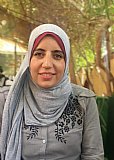Introduction
A foundational skill in any language learning adventure is mastering the numbers, and Arabic is no exception. With its unique numeral system and pronunciation, learning to count in Arabic can seem daunting at first. However, it's a crucial step not only for basic communication but also for navigating daily situations like shopping, bargaining, and understanding local traditions where numbers play a significant role.
This article aims to demystify the process, guiding beginners through the nuances of counting from 1 to 100 in Arabic. Whether you're a language enthusiast, a traveler planning to explore Arabic-speaking countries, or someone with a keen interest in linguistic structures, mastering these basics will enrich your understanding and appreciation of the Arabic language. From the rhythm and patterns of Arabic numerals to practical tips on memorization and usage, we'll cover everything you need to confidently count to 100 in Arabic. Let's dive into the fascinating world of Arabic numbers and take your first step towards fluency in this ancient and culturally rich language.
Understanding Arabic Numerals and Their Structure
Arabic numerals have a global significance, thanks in part to their widespread use in mathematics and science. However, when it comes to counting in the Arabic language, the numerals and their structure present a unique learning curve for beginners. Unlike the Arabic numerals (0-9) familiar in the West, the Eastern Arabic numerals used in many Arabic-speaking countries have distinct shapes and are written from right to left, aligning with the script's direction.
The Basics of Arabic Numerals
The Arabic numeral system is decimal-based, but the symbols used to represent numbers differ significantly from the Western 'Arabic numerals' we are accustomed to. This distinction is crucial to grasp early on, as it affects everything from reading numbers in texts to writing down prices or dates. Recognizing these numerals is your first step towards mastering counting in Arabic.
Unique Aspects of Arabic Numbers
One of the most fascinating aspects of Arabic numbers is their linguistic structure, which reflects the language's rich history and complexity. For instance, numbers in Arabic follow a specific gender agreement with the nouns they quantify, a feature that is uncommon in many other languages. Additionally, the formation of numbers beyond ten involves a combination of words, adding a layer of complexity but also a predictable pattern that learners can grasp with practice.
Arabic vs. Western Numerals: A Comparative Look
It's essential to differentiate between the 'Arabic numerals' used globally and the Eastern Arabic numerals used in Arabic-speaking regions. The global system (0-9), though originally developed by mathematicians in the Islamic world, has evolved into a form used internationally and differs in appearance from the numerals used in contemporary Arabic texts. Understanding this distinction helps in adapting to the Arabic numeral system more seamlessly.
Learning the Numerals
Starting with the basics, here are the Eastern Arabic numerals from 0 to 9, which are the building blocks for counting to 100:
- 0 (٠) – صفر (sifr)
- 1 (١) – واحد (wāḥid) for masculine, واحدة (wāḥidah) for feminine
- 2 (٢) – اثنان (ithnān) for masculine, اثنتان (ithnatān) for feminine
- 3 (٣) – ثلاثة (thlāthah)
- 4 (٤) – أربعة (arbaʿah)
- 5 (٥) – خمسة (khamsah)
- 6 (٦) – ستة (sittah)
- 7 (٧) – سبعة (sabʿah)
- 8 (٨) – ثمانية (thamānyah)
- 9 (٩) – تسعة (tisʿah)
Memorizing these numerals and their pronunciations lays the foundation for counting further. Practice writing them down and saying them out loud, paying special attention to the gender variations for one and two, as these will be crucial when forming higher numbers.
Numbers 1-10 in Arabic - Your First Milestone
The journey to counting to 100 in Arabic begins with mastering the first ten numbers. These foundational digits are not only essential for basic counting but also serve as the building blocks for forming larger numbers. Let's delve into the numbers 1 through 10, focusing on their pronunciation, nuances, and some memorization tips to aid your learning process.
Arabic Numbers 1 through 10
Understanding and memorizing the numbers 1 to 10 is crucial as they recur throughout the Arabic counting system. Here's a detailed look at these numbers, along with their phonetic pronunciation to help you articulate them correctly:
- واحد (Wāḥid) - /wā-ḥid/ for masculine, واحدة (Wāḥidah) - /wā-ḥi-dah/ for feminine
- اثنان (Ithnān) - /ith-nān/ for masculine, اثنتان (Ithnatān) - /ith-na-tān/ for feminine
- ثلاثة (Thalāthah) - /tha-lā-thah/
- أربعة (Arbaʿah) - /ar-baʿah/
- خمسة (Khamsah) - /kham-sah/
- ستة (Sittah) - /sit-tah/
- سبعة (Sabʿah) - /sabʿah/
- ثمانية (Thamānyah) - /tha-mān-yah/
- تسعة (Tisʿah) - /tisʿah/
- عشرة (ʿAsharah) - /ʿa-sha-rah/
It's important to note the gender-specific forms for the numbers one and two. From three to ten, the numbers remain the same regardless of the gender of the noun they are quantifying, simplifying the learning process slightly.
Pronunciation Guide and Tips
Pronunciation is key in Arabic, as minor variations can change meanings. Focus on the emphatic consonants found in numbers like ثلاثة (Thalāthah) and خمسة (Khamsah), which are pronounced deeper in the throat. Practice saying each number aloud, paying close attention to the placement of your tongue and the shape of your mouth. Listening to native speakers or using language learning apps can greatly enhance your pronunciation skills.
Memorization Strategies
- Repetition: Repeat the numbers out loud multiple times a day to help embed them in your memory.
- Association: Create associations or mnemonic devices for each number. For example, think of واحد (Wāḥid) as being the "winner" or number one.
- Practice with Objects: Count objects around you in Arabic, starting from one to ten and then backwards. This practical application helps reinforce learning.
- Use Flashcards: Create or use online flashcards that feature the Arabic numerals on one side and the phonetic pronunciation on the other.
- Engage in Language Exchanges: Practice counting with a language partner, arabic language tutor, or in language learning forums to improve your fluency and receive feedback.
Conclusion
Mastering the numbers 1 to 10 in Arabic is a significant first step in your journey to counting to 100. These numbers form the foundation for understanding more complex numerical structures in Arabic. By focusing on their pronunciation, committing them to memory, and practicing regularly, you'll be well on your way to achieving fluency in counting in Arabic. In the next section, we'll build on this foundation by exploring how to count from 11 to 20, where patterns begin to emerge, making it easier to grasp the numbering system as a whole.
Counting 11-20 in Arabic - Building Blocks
Transitioning from the foundational digits 1 through 10, the journey of counting in Arabic introduces a nuanced shift as we approach the numbers 11 through 20. This segment is pivotal for learners, unveiling a pattern that, once mastered, paves the way for understanding the broader nuances of the Arabic numerical system. Let's explore the structure, pronunciation, and effective learning strategies for these numbers, each accompanied by its English translation to enhance comprehension.
Arabic Numbers 11 through 20 and Their English Equivalents
The sequence from 11 to 20 in Arabic blends the "ones" digits with a variation of the word for ten, incorporating unique gender agreements for 11 and 12. Here's a closer look at these numbers, their pronunciations, and their English translations:
- 11. أحد عشر (Aḥad ʿashar) - /a-ḥad ʿa-shar/ for masculine, إحدى عشرة (Iḥdā ʿasharah) - /iḥ-dā ʿa-sha-rah/ for feminine. (Eleven)
- 12. اثنا عشر (Ithnā ʿashar) - /ith-nā ʿa-shar/ for masculine, اثنتا عشرة (Ithnatā ʿasharah) - /ith-na-tā ʿa-sha-rah/ for feminine. (Twelve)
- 13. ثلاثة عشر (Thalāthah ʿashar) - /tha-lā-thah ʿa-shar/. (Thirteen)
- 14. أربعة عشر (Arbaʿah ʿashar) - /ar-baʿah ʿa-shar/. (Fourteen)
- 15. خمسة عشر (Khamsah ʿashar) - /kham-sah ʿa-shar/. (Fifteen)
- 16. ستة عشر (Sittah ʿashar) - /sit-tah ʿa-shar/. (Sixteen)
- 17. سبعة عشر (Sabʿah ʿashar) - /sabʿah ʿa-shar/. (Seventeen)
- 18. ثمانية عشر (Thamānyah ʿashar) - /tha-mān-yah ʿa-shar/. (Eighteen)
- 19. تسعة عشر (Tisʿah ʿashar) - /tisʿah ʿa-shar/. (Nineteen)
- 20. عشرون (ʿIshrun) - /ʿish-rūn/. (Twenty)
Decoding the Pattern
The formation of numbers 11 through 19 in Arabic is intriguing as it reverses the typical numerical order found in many languages, leading with the unit (one through nine) before the ten. This reversal is particularly marked in the formation of 11 and 12, which adapt based on gender, adding an additional layer to their complexity. From 13 to 19, the construction becomes more straightforward, appending عشر (ʿashar), meaning "ten," to the basic unit numbers.
Pronunciation Insights
Pronouncing these numbers accurately is crucial for clear communication. Focus on mastering the gender distinctions in 11 and 12, and practice the rest of the numbers with their respective عشر (ʿashar) endings to ensure fluency. Listening to native pronunciation and repeating the numbers aloud will aid in this process.
Effective Learning Strategies
- Associative Learning: Link each Arabic number with its English counterpart to build dual-language proficiency. This technique reinforces memory by creating a bilingual context for each number.
- Visual and Auditory Aids: Use charts, flashcards, and audio recordings to familiarize yourself with the numbers both visually and aurally. Engaging multiple senses can enhance memorization.
- Practical Application: Incorporate these numbers into daily tasks, such as counting objects or practicing time expressions in Arabic. Applying numbers in context aids retention.
- Repetition and Review: Regularly revisiting these numbers ensures long-term retention. Incorporate them into language exercises, and review them in both isolated and sequential formats.
The Tens - 20 to 100 by Tens
Progressing in our exploration of Arabic numerals, the journey from understanding the basics to mastering counting in tens from 20 to 100 represents a significant leap towards fluency. This section introduces a straightforward and repetitive pattern that simplifies the counting process, making it easier to comprehend and remember. Let's delve into each of these milestones, highlighting their Arabic representations, English translations, and practical tips to aid memorization and pronunciation.
Arabic Numbers from 20 to 100 by Tens and Their English Equivalents
Counting by tens in Arabic showcases the language's logical structure, with each ten building upon the last. Here are the numbers from 20 to 100 in Arabic, along with their phonetic pronunciations and English translations:
- 20. عشرون (ʿIshrun) - /ʿish-rūn/. (Twenty)
- 30. ثلاثون (Thalāthūn) - /tha-lā-thūn/. (Thirty)
- 40. أربعون (Arbaʿūn) - /ar-baʿūn/. (Forty)
- 50. خمسون (Khamsūn) - /kham-sūn/. (Fifty)
- 60. ستون (Sittūn) - /sit-tūn/. (Sixty)
- 70. سبعون (Sabʿūn) - /sabʿūn/. (Seventy)
- 80. ثمانون (Thamānūn) - /tha-mān-ūn/. (Eighty)
- 90. تسعون (Tisʿūn) - /tisʿūn/. (Ninety)
- 100. مائة (Mi'ah) - /mi-ʾah/. (One Hundred)
Recognizing the Pattern
From 20 to 90, the Arabic numbers follow a consistent pattern, ending with "ون" (-ūn), which makes learning these numbers more manageable. The prefix changes according to the base number, but the suffix remains constant, providing a simple formula for remembering these numerals.
Tips for Pronunciation
- Consistency in Suffix: Focus on the "-ūn" ending, which is common across these tens. Getting comfortable with this sound will help you accurately pronounce the numbers from 20 to 90.
- Emphasis on Numbers: Pay attention to the pronunciation of the base numbers (three for thirty, four for forty, etc.), as these will carry over from what you learned in the 1-10 section. Practice saying these base numbers with the "-ūn" ending to build fluency.
Memorization Strategies
- Visual Aids: Create or use existing charts that visually depict these numbers alongside their English translations. Seeing the numbers in both languages can help reinforce memory through visual association.
- Repetition and Rhyme: Use repetition and create rhymes or songs incorporating these numbers. The rhythmic pattern and repetition can enhance recall and make learning more enjoyable.
- Practical Application: Apply these numbers in real-life scenarios, such as discussing prices, distances, or ages in Arabic. Using numbers in context can significantly improve retention and understanding.
- Flashcards and Apps: Utilize flashcards or language learning apps that focus on numbers. These tools often include audio pronunciations, which can be invaluable for mastering the correct sounds.
Conclusion
Mastering the numbers 20 to 100 by tens in Arabic marks a milestone in your journey towards numerical fluency in the language. By recognizing the pattern, focusing on accurate pronunciation, and employing effective memorization techniques, you can confidently navigate this segment of Arabic numeracy. These building blocks not only simplify counting in Arabic but also lay the groundwork for more complex numerical expressions, bringing you closer to achieving comprehensive language mastery.
Putting It All Together - Counting to 100
Having covered the foundations of Arabic numbers from 1 to 10, navigated the nuances of 11 to 20, and learned the systematic approach to counting by tens up to 100, you're now poised to put all these pieces together. This comprehensive understanding allows you to count from 1 to 100 in Arabic, bridging basic numeracy to more advanced counting techniques. Let's explore how to combine these elements, providing examples and tips to enhance your fluency in counting within this range.
Combining Basics with Patterns
The journey to counting to 100 in Arabic involves blending the foundational numbers with the patterns established in the tens. Here's how you can apply this knowledge:
- 21 to 29 (Twenty-one to Twenty-nine): Start with عشرون (ʿIshrun) for twenty and then add the numbers 1 through 9. For example, 21 is واحد وعشرون (wāḥid wa-ʿishrūn), 22 is اثنان وعشرون (ithnān wa-ʿishrūn), and so on.
- 31 to 39 (Thirty-one to Thirty-nine), 41 to 49 (Forty-one to Forty-nine), etc., follow a similar structure, using the tens (ثلاثون Thalāthūn for thirty, أربعون Arbaʿūn for forty, etc.) and adding the numbers 1 through 9.
Examples for Practice
To illustrate, here are a few examples across the spectrum:
- 25 (Twenty-five): خمسة وعشرون (Khamsah wa-ʿishrūn)
- 38 (Thirty-eight): ثمانية وثلاثون (Thamānyah wa-thalāthūn)
- 46 (Forty-six): ستة وأربعون (Sittah wa-arbaʿūn)
- 59 (Fifty-nine): تسعة وخمسون (Tisʿah wa-khamsūn)
- 73 (Seventy-three): ثلاثة وسبعون (Thalāthah wa-sabʿūn)
- 82 (Eighty-two): اثنان وثمانون (Ithnān wa-thamānūn)
- 97 (Ninety-seven): سبعة وتسعون (Sabʿah wa-tisʿūn)
Tips for Mastering Counting to 100
- Practice in Context: Use these numbers in real-life situations, such as talking about prices, quantities, or dates. Applying numbers in practical scenarios helps cement your understanding and recall.
- Sequential Practice: Regularly count from 1 to 100 and back, focusing on the transition points, especially the shifts from single digits to tens and the nuances of numbers like 21, 35, or 58.
- Language Exchange: Engage with native speakers or fellow learners to practice counting aloud. This interaction can highlight pronunciation nuances and reinforce learning through conversation.
- Use Visual and Auditory Aids: Leverage tools such as online videos, apps, and educational resources that offer visual and auditory reinforcement of the numbers and their correct pronunciation.
Conclusion
Counting to 100 in Arabic is a significant milestone that showcases your growing proficiency in the language. By understanding and applying the foundational numbers, recognizing patterns, and practicing consistently, you're not just learning to count; you're also unlocking a deeper appreciation for the structure and beauty of the Arabic language. This knowledge serves as a solid foundation for further exploration into Arabic numeracy, preparing you for more complex numerical expressions and practical language use in everyday situations.















